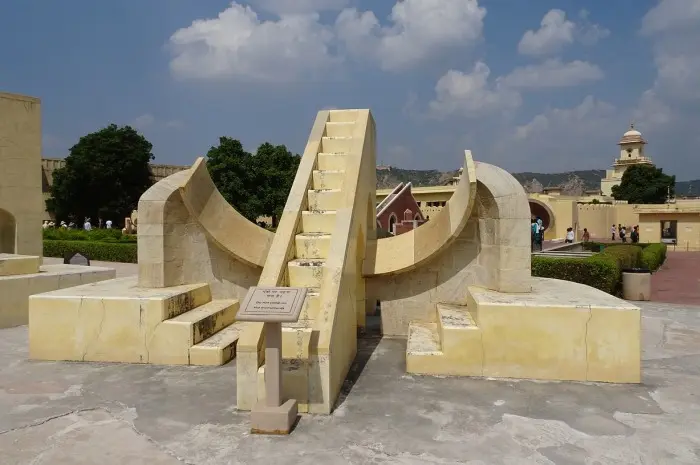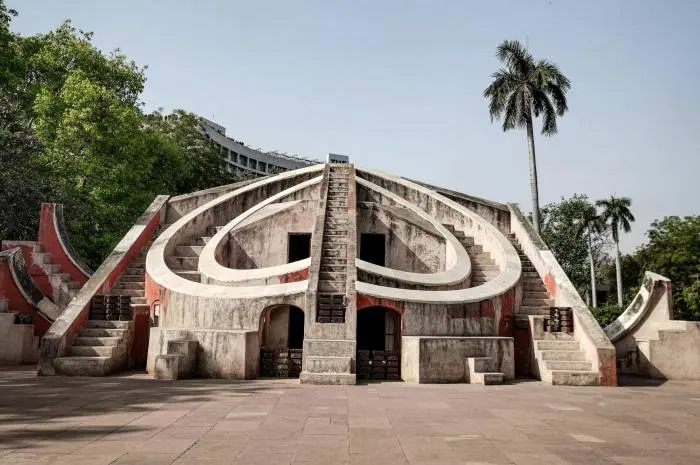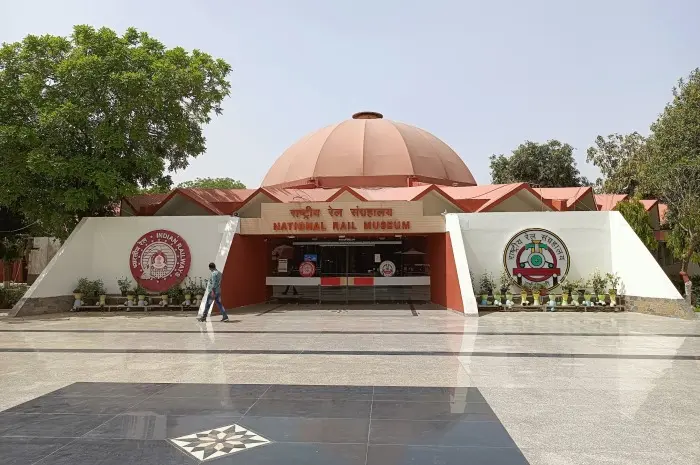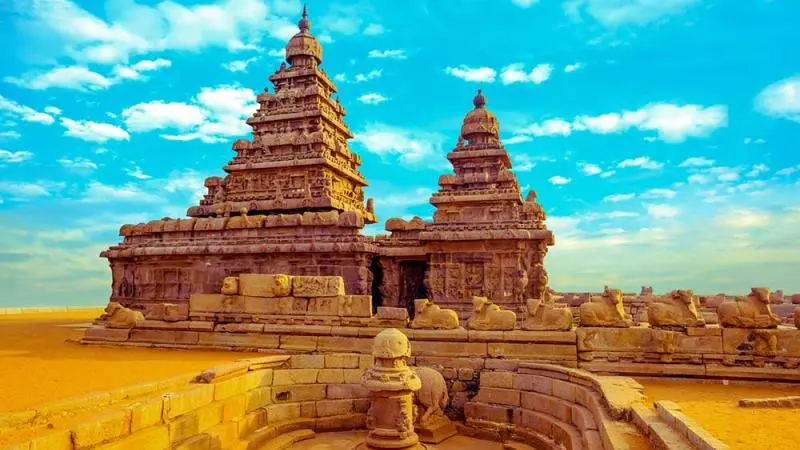Locations: Connaught Place, Sansad Marg, New Delhi, Delhi 110001, India
Jantar Mantar, located in the bustling city of New Delhi, is a fascinating astronomical observatory that stands as a testament to India’s rich scientific heritage.
Built in 1724 by Maharaja Jai Singh II of Jaipur, Jantar Mantar is one of five such observatories constructed across India.
This remarkable site features a collection of nineteen architectural astronomical instruments, designed to measure time, predict eclipses, track celestial bodies, and observe the orbits of planets.
The precision and ingenuity of these structures highlight the advanced understanding of astronomy and mathematics in 18th-century India.
The name “Jantar Mantar” is derived from the Sanskrit words “Yantra” (instrument) and “Mantra” (formula), reflecting the observatory’s purpose of combining scientific instruments with mathematical calculations.
Despite being situated amidst the modernity of New Delhi, Jantar Mantar retains its historical and scientific significance, attracting tourists, students, and scholars from around the world.
Its unique architectural design and historical importance make Jantar Mantar a must-visit destination for anyone interested in the intersection of science, history, and architecture.
Historical Significance
Jantar Mantar was constructed during a period when astronomy played a crucial role in navigation, agriculture, and religious practices.
Maharaja Jai Singh II, a keen astronomer and mathematician, built this observatory to refine the astronomical tables and to predict the movements of celestial bodies with greater accuracy.
The Delhi Jantar Mantar is part of a network of observatories that includes Jaipur, Ujjain, Mathura, and Varanasi.
These observatories were pivotal in advancing astronomical knowledge and contributing to the scientific developments of the time.
The site was strategically chosen for its geographical location, which allowed for optimal observations of the celestial sphere.
The instruments at Jantar Mantar, constructed from brick and marble, were designed to provide precise measurements without the aid of modern technology.
The observatory’s historical significance extends beyond its scientific contributions, as it also represents the cultural and intellectual achievements of the period.
Architectural Marvels
Jantar Mantar’s architectural design is both functional and aesthetically striking.
The observatory comprises several monumental structures, each with a specific astronomical purpose.
The most prominent of these is the Samrat Yantra, a giant triangular sundial that stands 70 feet tall.
This impressive instrument can measure time with an accuracy of about two seconds, demonstrating the advanced engineering skills of the period.
Another significant structure is the Misra Yantra, a unique instrument used to determine the shortest and longest days of the year.
The Jai Prakash Yantra, consisting of two concave hemispherical structures, allows for the precise measurement of celestial coordinates.
Each instrument at Jantar Mantar serves a distinct function, showcasing the ingenuity and precision of ancient Indian astronomy.
Scientific Contributions
The instruments at Jantar Mantar were designed to perform various astronomical calculations, such as tracking the movement of the sun, moon, and planets.
These calculations were essential for creating accurate calendars, determining auspicious dates for religious ceremonies, and aiding navigation.
The observatory’s ability to predict solar and lunar eclipses and measure time with exceptional accuracy highlights the advanced scientific knowledge of the era.
Jantar Mantar’s contributions to astronomy were not limited to India; they also influenced astronomical research worldwide.
The observatory’s instruments and the data they generated were studied by astronomers and scholars, contributing to the global understanding of celestial mechanics.
Today, Jantar Mantar continues to inspire curiosity and admiration, serving as a reminder of India’s rich scientific heritage.
Visitor Experience

Visiting Jantar Mantar offers a unique opportunity to explore the intersection of science, history, and architecture.
The observatory’s open-air layout allows visitors to walk among the instruments, providing a hands-on understanding of their functions and significance.
Informative plaques and guided tours offer detailed explanations of each instrument, enhancing the educational experience.
The site is also a popular destination for photography enthusiasts, with its striking geometric structures providing a visually captivating backdrop.
The serene environment amidst the bustling city of Delhi offers a peaceful retreat for reflection and exploration.
Whether you’re a student, a history buff, or simply curious about astronomy, Jantar Mantar provides a fascinating journey through time and science.
How to Reach Jantar Mantar
Jantar Mantar is conveniently located in the heart of New Delhi, making it easily accessible by various modes of transportation.
The nearest metro station is Janpath, which is a short walk from the observatory.
Visitors can also reach the site by taxi, auto-rickshaw, or bus. The central location ensures that Jantar Mantar is well-connected to other major attractions in Delhi.
Best Time to Visit
The best time to visit Jantar Mantar is during the cooler months from October to March when the weather is pleasant and conducive to exploring outdoor sites.
Visiting in the early morning or late afternoon offers the best lighting for photography and a more comfortable experience.
The observatory is open to visitors throughout the year, with specific visiting hours, so it’s advisable to check the timings before planning your visit.
Jantar Mantar, with its historical significance, architectural brilliance, and scientific contributions, is a must-visit destination in New Delhi.
Whether you’re delving into its astronomical heritage, marveling at its architectural design, or simply exploring the site, Jantar Mantar offers a unique and enriching experience.
Make sure to include Jantar Mantar in your Delhi itinerary to discover one of India’s most remarkable scientific landmarks.







